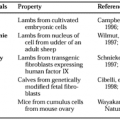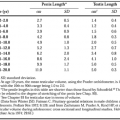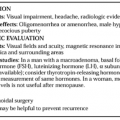LABORATORY EVALUATION
Part of “CHAPTER 58 – PRIMARY HYPERPARATHYROIDISM“
The diagnosis of primary hyperparathyroidism depends on laboratory tests. The serum calcium concentration is virtually always elevated. The serum phosphorus value may be decreased, but it is usually normal, although typically in the lower range of normal.
Newer markers of bone metabolism are useful to evaluate the presence of underlying bone involvement in cases of primary hyperparathyroidism. Markers of bone formation and resorption tend to be elevated, even in asymptomatic primary hyperparathyroidism. Whether quantification of these markers is useful to predict the extent of PTH-dependent skeletal tumors or whether they are useful predictors of the course of the skeletal involvement is not yet certain, however.
The bone formation marker, total alkaline phosphatase activity, which is readily available on routine multichannel panels, continues to be a useful marker in primary hyperparathyroidism,52 and its bone-specific isoenzyme is often clearly elevated in patients with mild primary hyperparathyroidism.53,54 Osteocalcin is also generally increased in patients with primary hyperparathyroidism.54,55 and 56
Bone resorption is reflected in a product of osteoclast activity, tartrate-resistant acid phosphatase (TRAP), and collagen breakdown products such as hydroxyproline, hydroxypyridinium
cross-links of collagen, and the small N- and C-telopep-tides of collagen metabolism. The oldest known marker of bone resorption,57,58 urinary hydroxyproline excretion, is frankly elevated in patients with osteitis fibrosa cystica. However, in patients with mild, asymptomatic primary hyperparathyroidism, values are often entirely normal. The hydroxypyridinium cross-links of collagen have replaced hydroxyproline excretion as markers of bone resorption used in evaluating primary hyperparathyroidism (see Chap. 56). These cross-links of collagen (pyridinoline and deoxypyridinoline) are mildly elevated.59 Studies of TRAP levels in primary hyperparathyroidism are limited, although levels have been shown to be elevated.60 Bone sialoprotein is a phosphorylated glycoprotein that makes up β5% to 10% of the noncollagenous protein of bone. It is elevated in high-turnover states and reflects, in part, bone resorption. In primary hyperparathyroidism, bone sialoprotein levels are elevated and correlate with urinary pyridinoline and deoxypyridinoline.61 Although their measurement is not mandatory for the evaluation of the patient with primary hyperparathyroidism,
bone marker levels can provide useful information about the extent to which the skeleton is involved in the hyperparathyroid process.
cross-links of collagen, and the small N- and C-telopep-tides of collagen metabolism. The oldest known marker of bone resorption,57,58 urinary hydroxyproline excretion, is frankly elevated in patients with osteitis fibrosa cystica. However, in patients with mild, asymptomatic primary hyperparathyroidism, values are often entirely normal. The hydroxypyridinium cross-links of collagen have replaced hydroxyproline excretion as markers of bone resorption used in evaluating primary hyperparathyroidism (see Chap. 56). These cross-links of collagen (pyridinoline and deoxypyridinoline) are mildly elevated.59 Studies of TRAP levels in primary hyperparathyroidism are limited, although levels have been shown to be elevated.60 Bone sialoprotein is a phosphorylated glycoprotein that makes up β5% to 10% of the noncollagenous protein of bone. It is elevated in high-turnover states and reflects, in part, bone resorption. In primary hyperparathyroidism, bone sialoprotein levels are elevated and correlate with urinary pyridinoline and deoxypyridinoline.61 Although their measurement is not mandatory for the evaluation of the patient with primary hyperparathyroidism,
bone marker levels can provide useful information about the extent to which the skeleton is involved in the hyperparathyroid process.
Stay updated, free articles. Join our Telegram channel

Full access? Get Clinical Tree






